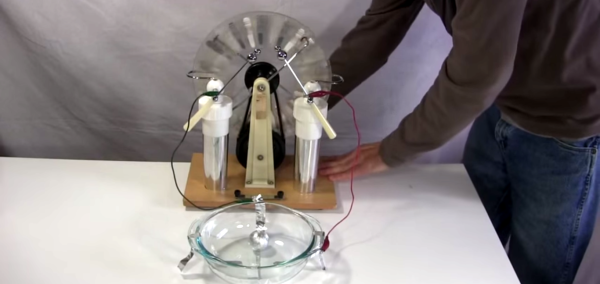Okay, not actually a cyclotron… but this ball cyclotron is a good model for what a cyclotron does and the concepts behind it feel kooky and magical. A pair of Ping Pong balls scream around a glass bowl thanks the repulsive forces of static electricity.
It’s no surprise that this comes from Rimstar, a source we’ve grown to equate with enthralling home lab experiments like the Ion Wind powered Star Trek Enterprise. Those following closely will know that most of [Steven Dufresne’s] experiments involve high voltage and this one is no different. The same Wimshurst Machine he used in the Tea Laser demo is brought in again for this one.
A glass bowl is used for its shape and properties as an insulator. A set of electrodes are added in the form of aluminum strips. These are given opposite charges using the Wimshurst machine. Ping Pong balls coated in conductive paint are light enough to be moved by the static fields, and a good crank gets them travelling in a very fast circuit around the bowl.
When you move a crank the thought of being connected to something with a chain pops into your mind. This feels very much the same, but there is no intuitive connection between the movement of the balls and your hand on the crank. Anyone need a prop for their Halloween party?
If you don’t want to buy or build a Wimshurst machine you can use a Van De Graaff generator. Can anyone suggest other HV sources that would work well here?













